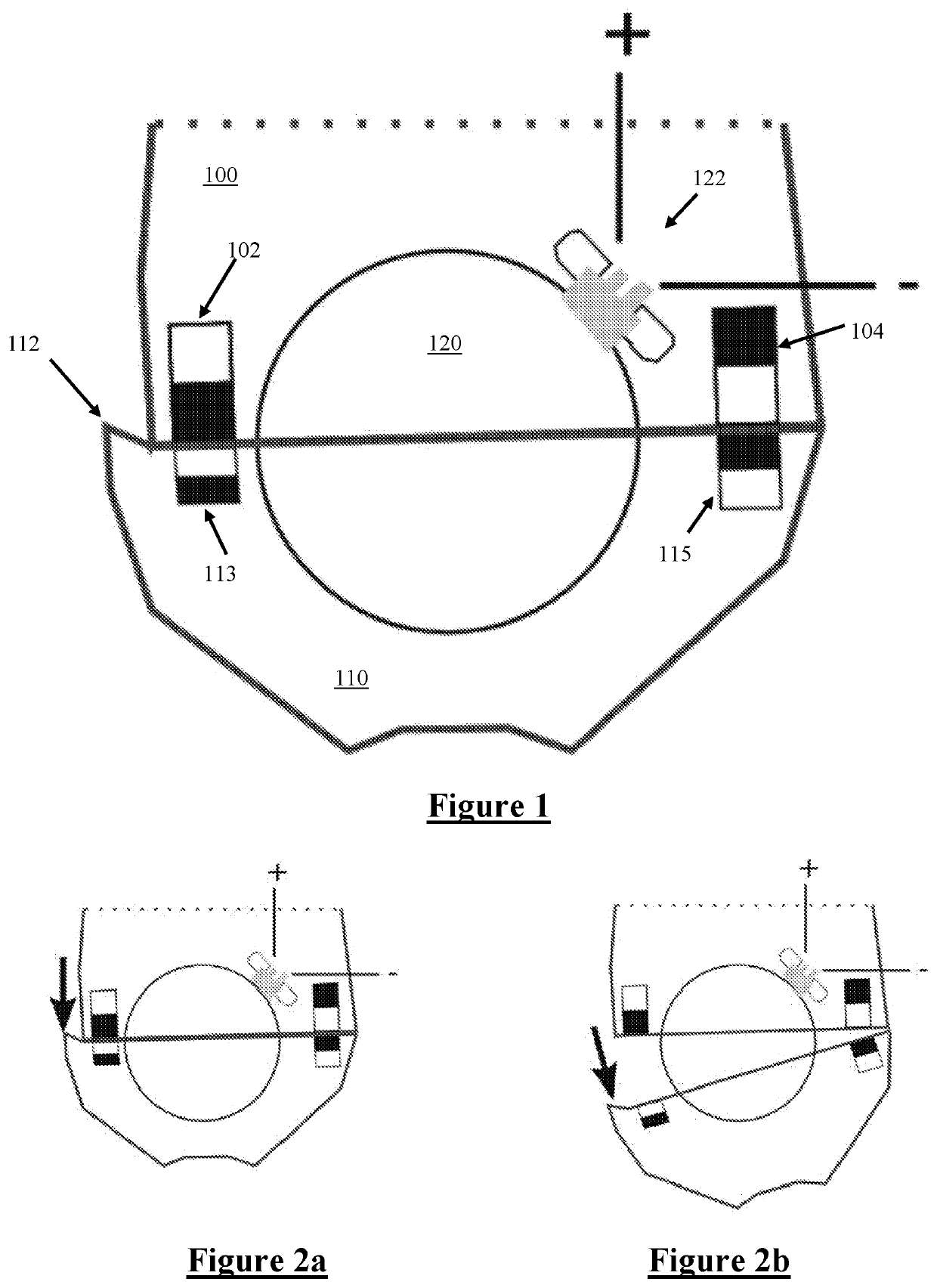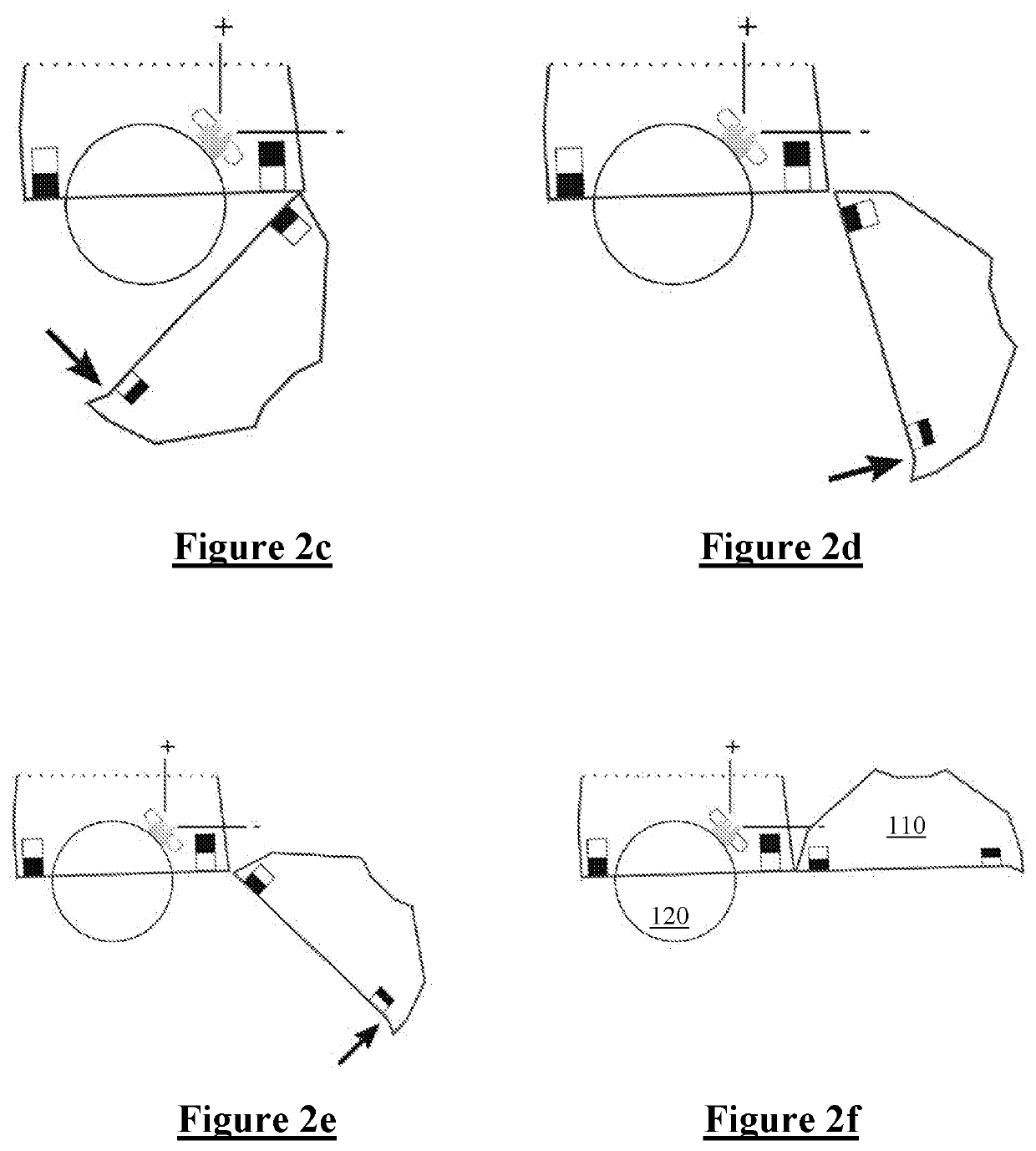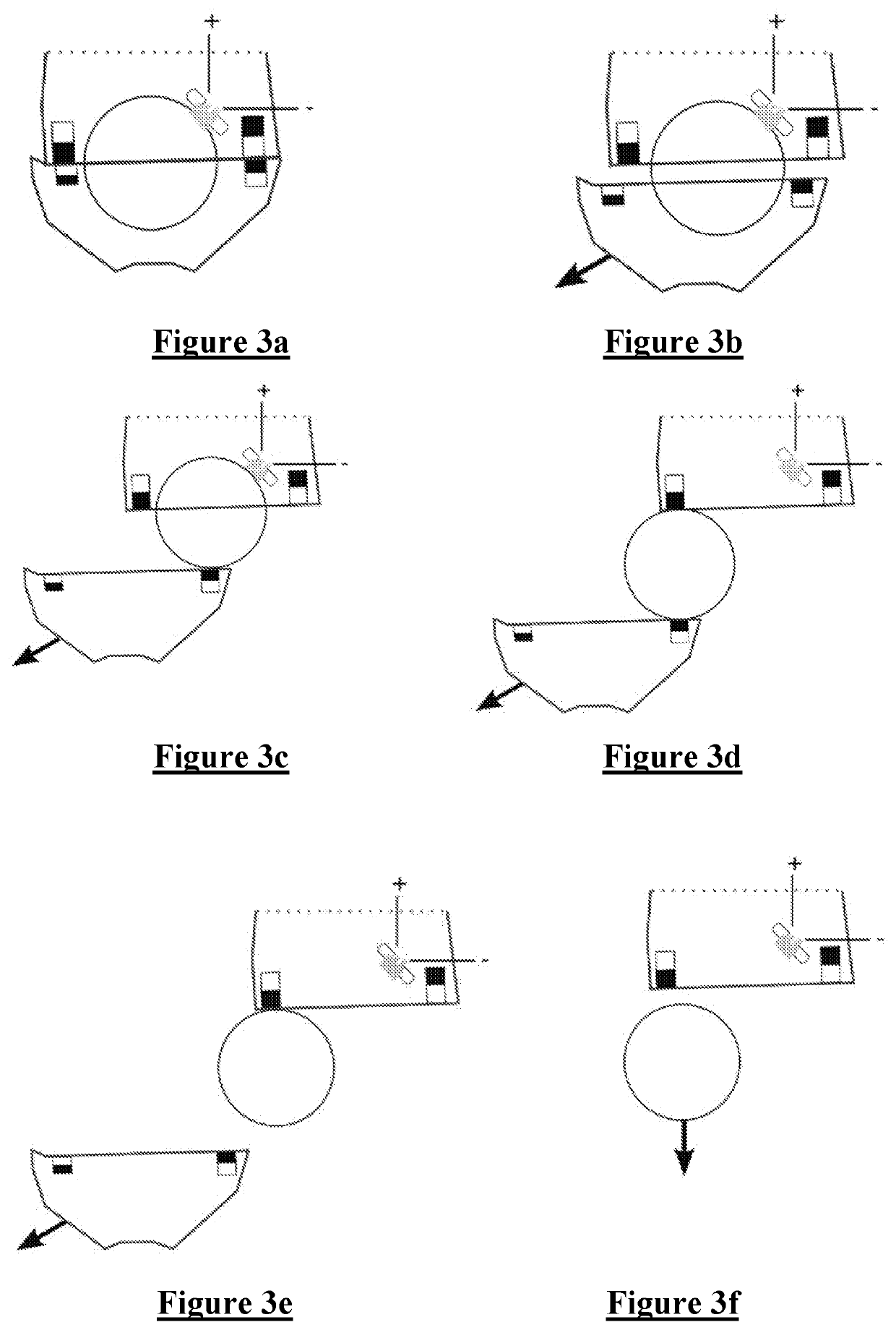A Magnetic Battery Cover for a Hearing Device
a hearing device and magnetic battery technology, applied in the direction of deaf-aid sets, electrical equipment, sets using external connections, etc., can solve the problems of limited space available for a battery to power the device, single rechargeable battery not enough to power the device for 5 years, and fragile hatches, etc., to achieve simple device design, prevent incorrect connection, and reduce the effect of dexterity
- Summary
- Abstract
- Description
- Claims
- Application Information
AI Technical Summary
Benefits of technology
Problems solved by technology
Method used
Image
Examples
Embodiment Construction
[0077]FIG. 1 is a cross sectional view of a battery cover 110 and battery compartment 100 in accordance with a first embodiment of the present invention. The described embodiments provide a magnetic replaceable battery compartment for a hearing aid. More specifically, a modular battery case to store and facilitate connection between the hearing aid and a replaceable battery is presented. The compartment 100 and cover 110 are held together by magnets 102, 104, 113, 115. Throughout the drawings, for illustrative purposes, permanent magnets are depicted using black fill for the magnetic north end of the magnet and white fill for the magnetic south end of the magnet. Alternative embodiments may equivalently or similarly reverse the polarity of all or some of the magnets shown, and / or may replace a suitable subset of the described permanent magnets with any suitable magnetic restraint element such as a steel plate.
[0078]The compartment 100 and cover 110 together define a circular battery...
PUM
 Login to View More
Login to View More Abstract
Description
Claims
Application Information
 Login to View More
Login to View More - Generate Ideas
- Intellectual Property
- Life Sciences
- Materials
- Tech Scout
- Unparalleled Data Quality
- Higher Quality Content
- 60% Fewer Hallucinations
Browse by: Latest US Patents, China's latest patents, Technical Efficacy Thesaurus, Application Domain, Technology Topic, Popular Technical Reports.
© 2025 PatSnap. All rights reserved.Legal|Privacy policy|Modern Slavery Act Transparency Statement|Sitemap|About US| Contact US: help@patsnap.com



